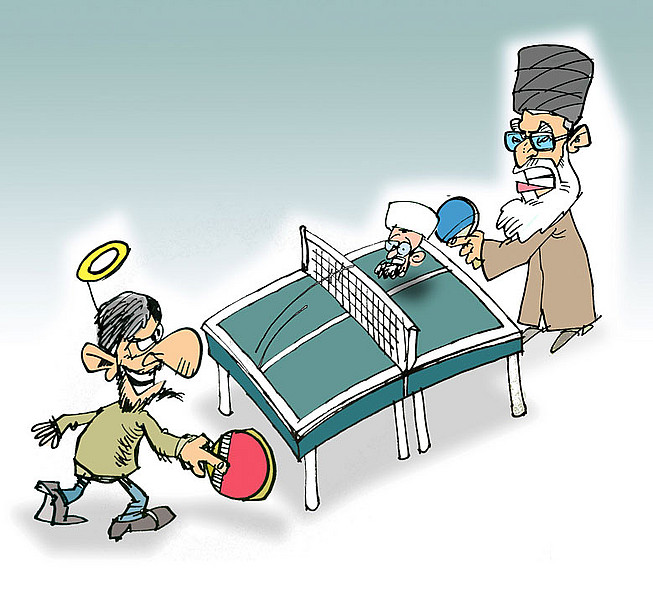Iran Opinion: "We Should Side with the Clergy" in Tehran Showdown (Nasr)
 Vali Nasr, a former advisor in the US State Department, uses historical background to go over much of the ground of the Iranian political conflict that we have covered in recent months.
Vali Nasr, a former advisor in the US State Department, uses historical background to go over much of the ground of the Iranian political conflict that we have covered in recent months.
The twist is that Nasr, writing for Foreign Policy magazine, has a general recommendation, "[We] should be rooting for the clergy...[because] their victory will bring about the quickest end to the Islamic Republic."
While much of the Middle East is in the throes of a historic struggle for democracy, Iran's main political fissure pits the clerical establishment against muscular, nationalist upstarts who seek to usurp power. And in this contest between Iran's elite factions, the world should be rooting for the clergy.
The primary players in this battle are President Mahmoud Ahmadinejad and Supreme Leader Ayatollah Ali Khamenei. The two forged an ideological alliance in 2005 and worked closely to crush the "Green Movement" after the disputed 2009 election. They are now engaged in a public spat over the spoils of power and, more importantly, over the proper interpretation of the Shiite fundamentalist ideology that inspired the 1979 Islamic Revolution. The contest spilled dramatically into public view in April over Ahmadinejad's ultimately unsuccessful attempts to dismiss Iran's intelligence minister, and again this week with the forced resignation and arrest of the deputy foreign minister, an ally of the president's chief of staff, Esfandiar Rahim Mashaei.
The political bickering masks a more fundamental dispute over the direction of the Shiite fundamentalist ideology that Iran's theocracy draws its legitimacy from. Ayatollah Ruhollah Khomeini guided the 1979 revolution through a mix of religious zealotry and leftist revolutionary activism, with the aim of fomenting class war set to an Islamic tune. The Islamic state he envisioned was a dictatorship of the proletariat ruled by the clergy; in homage to Plato's Republic, Khomeini privileged a class distinguished by its education in Islamic law. He advanced the claim that, in the absence of the Shiite messiah, the Hidden Imam, they represent him in the world. And Khomeini assumed the position of the cleric supreme, vali-e faqih, the all-knowing philosopher-king with divine political authority.
The Islamic and the leftist components of Khomeinism came apart after his death in 1989. Exhausted by war and revolution, Iran opted for normalcy. Those interested in the Islamic aspect of the revolution, the so-called conservatives, gathered around Khamenei. They ended revolutionary activism, opened the economy to private-sector activity, and erected an authoritarian theocracy run by the supreme leader.
Meanwhile, the more radical Jacobin faction, which fed on revolutionary activism and favored a socialist economy, was pushed to the margins, only to resurface in the late 1990s in the guise of reformists. So it is that Mir Hossein Mousavi, the leftist prime minister of the 1980s, has emerged as the face of the Green Movement.
Conservatives and reformists-cum-reconstructed-leftists have fought over power for the past two decades. Reformists have placed their hopes in elections and a Vatican II-style transformation of Shiite theology. Conservatives have resisted tampering with both religion and ideology and have used brute force to hold on to power. In the process, Iran's Shiite fundamentalist ideology, shorn of its leftist legacy, turned stolid and unpopular, and the regime turned to repression to survive.

 Saturday, June 25, 2011 at 7:47
Saturday, June 25, 2011 at 7:47
Reader Comments